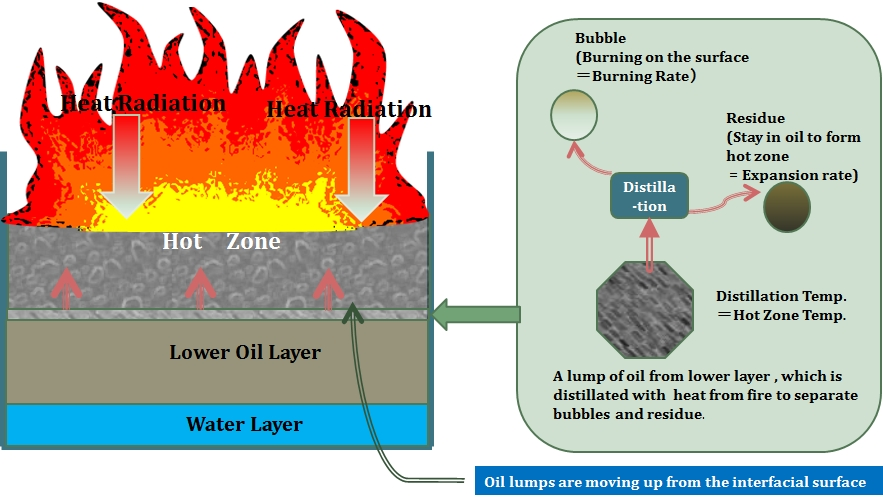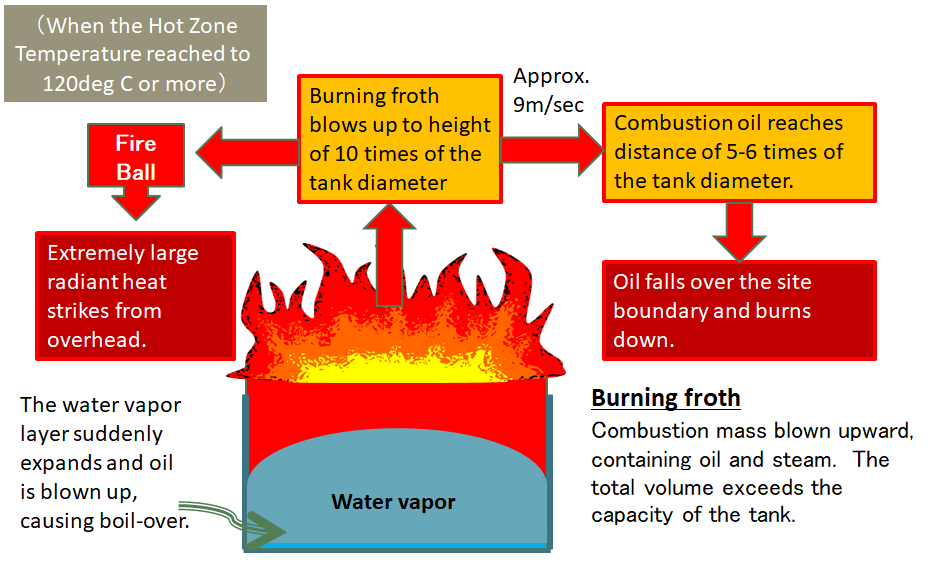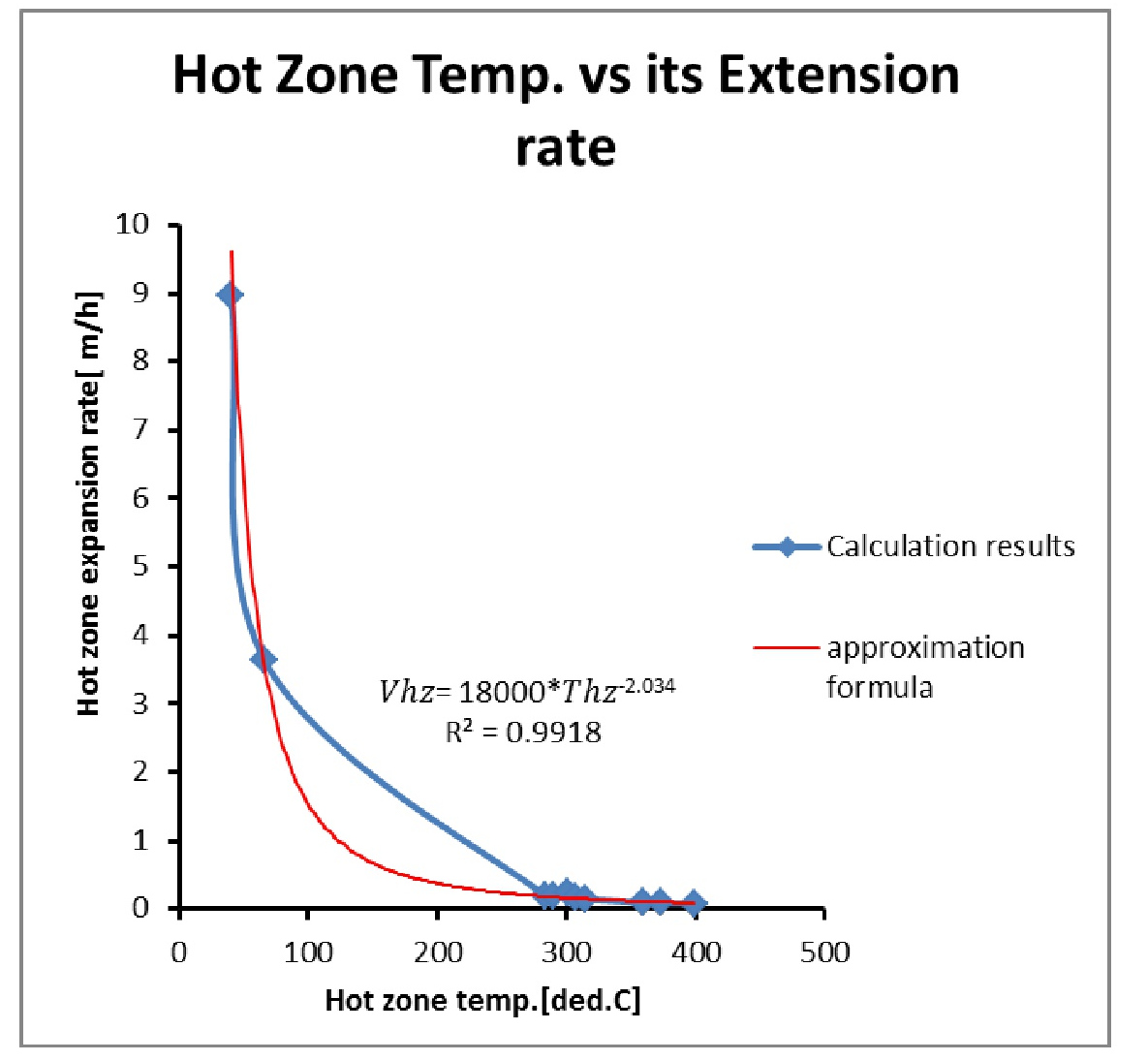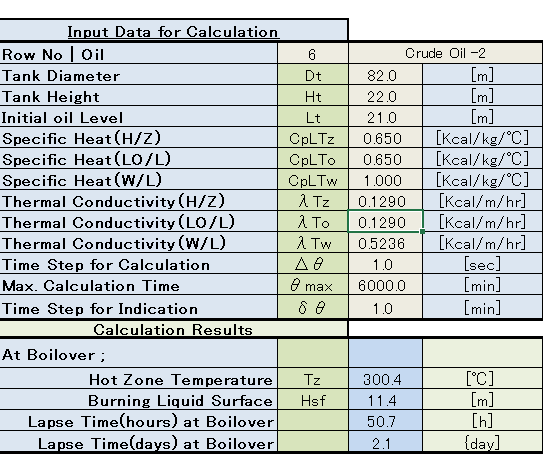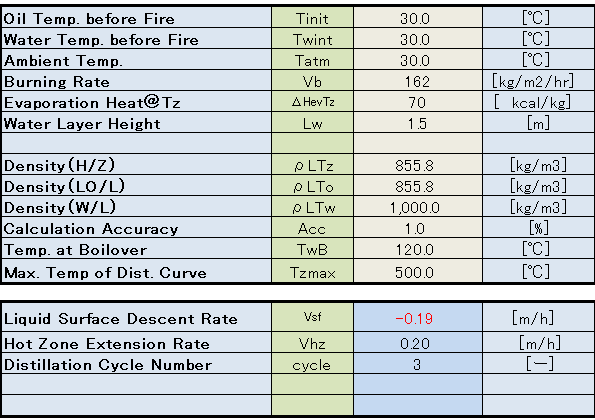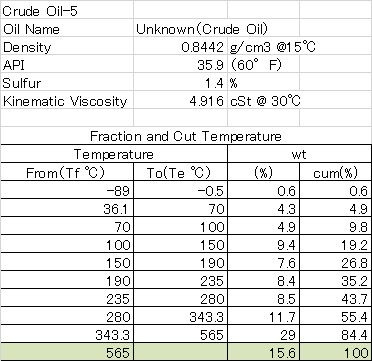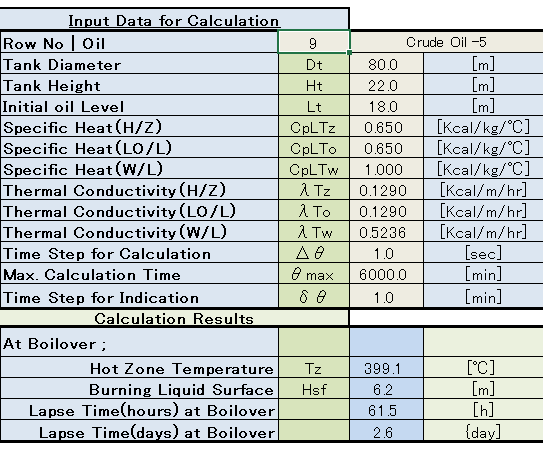Boilover
We had developed the simulation program to calculate the hot zone temperature and its expansion rate, when a fire occurs in a crude oil tank. The calculation is based on the distillation curve of a crude oil and it is possible to predict the time when boilover will occur after the fire has initiated.
Furthermore, by the additional program, it had been possible to calculate prediction time for cooling of the tank contents after the fire is extinguished.
Mechanism of Boilover and disaster
|
Figure-1: Mechanism of Boilover
|
Figure-2: Disaster of Boilover
|
Conditions the boilover likely occurs
According to various experimental reports, the boilover could occur not only crude oil but also other combustible liquids if they satisfy the conditions described below.
-
The hot zone or heat wave appears during a tank fire, and go toward the bottom. This phenomena may be possible in the case that the fuel is comprised with multiple components and wide boiling temperature.
-
Viscosity of the fuel is relatively high, that means it generates bubbles easily.
-
Boilover may be possible in case of pure combustible liquids, gasoline, heavy oil etc,.
In case of pure liquid or fuel having narrow range of boiling temperature, hot oil layer just beneath the burning surface is thin and temperature variation curve may be exponential. Downward speed of this hot oil layer is slow and almost equal to burning rate, so even if boilover occurs, amount of blown off oil is already small and it has been not so dangerous.
Actually it had been found for kerosene or diesel oil to occur boilover. - Hot zone temperature shall be 120 deg.C or higher.
When the hot zone reaches to the water layer at the tank bottom, if oil temperature is 100 deg.C, water boils but not violently , so oil could not be raised up and steam bubble goes up through oil . But if oil temperature is 120 deg.C or higher, then nucleate boiling occurs and large amount of steam will be generated at a short time and spread horizontally in the tank bottom to raise up the whole oil , resulting in boilover.
Relation between Hot Zone Temperature and Its Extension rate
|
||
Boilover Simulation Sample
The figures below are simulation results for two kinds of crude oil, each has a different distillation curve. the simulation shows that lapse time at boilover from initiating a fire is 1.8 days in case of crude oil 2, and 2.6 days crude oil 5.
Usually hot zone temperature is higher than approx. 300 deg.C like crude oil 5, but in case of crude oil 2, firstly hot zone temperature is very low temperature and new temperature hot zone extension is repeated by three times until hot zone temperature exceeds 120 deg.C and boilover occurs.
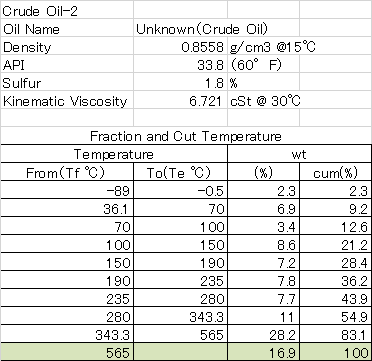 |
|
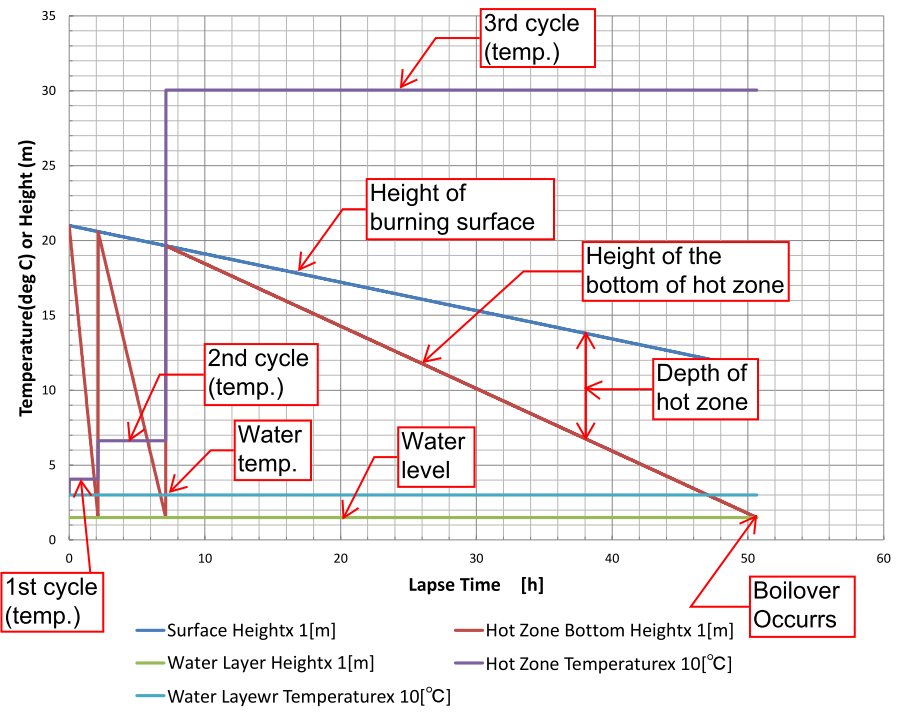 |
|
|
|
|
|
Temperature profile in the tank after extinguished and cooling
- Program
After extinguishment of a fire, oil temperature of upper portion of the tank will be hot zone and the lower portion oil remains lower than 120 deg,C, and contacts with water layer at the bottom.The lower temperature oil and water will be heated by the upper portion hot oil, but convection heat transfer may not occur because the oil is heated from upside resulting in lower density than lower oil layer. So the heat transfer may be mainly by heat conduction, which is very slow than the convection. Therefore, it takes long time for reaching homogeneous oil temperature in the tank.
Our program assumes heat transfer within the tank is conduction only. - Cooling
When a large tank(80 m diameter) had been fired and extinguished, it is not easy to cool the oil and requires so long time for the cooling.In case of cooling by wind only with its velocity of 6 to 8 m/s, the calculation result shows oil temperature decreases to about 140 deg.C with 600 hours after extinguished.This result means it takes about one month to cool the oil after extinguished and protection is required to prevent the tank from re-ignition.
In case of cooling by water streams, which are assumed to be applied for all circumference of the tank continuously , the calculated oil temperature is about 125 deg.C with 300 hours after extinguished.Effect of water cooling is remarkable and cooling time is reduced to almost a half of ones by wind cooling. - Possibility of boilover again after extinguishment
Even if the fire can be extinguished before boilover, the hot zone had been existing in the tank. As described above, the lower oil is heated by the upper oil and its temperature becomes higher gradually. if the lower oil temperature reaches to 120 deg.C and contact with the water layer, then boilover will occurs. As a result of our simulation for a large crude oil tank, its possibility is almost zero, but for small tank the boilover after extinguishment is possible.
Article
Please click this to see the article published in The CATALYST January 2015.
The Fully described literature below is co-authored with Professor Hideo Ohtani of Yokohama National , can be downloaded from this.
Prediction of Hot Zone Temperature and its Extension Rate Up to Boilover
Hideo Ohtani, Professor, Department of Safety Management, Yokohama National University, Japan, and Yoshiyuki Kato, CEO of Corporation FPEC ,Japan,
Abstract
Simulation program was developed to predict hot zone temperature and its extension rate for a crude oil fire in a large tank. The calculated results are summarized in this report. Authors believe that these calculated results are reliable enough for an actual size tank fire, since the calculated results can well explain why around 1 [m/h] is the maximum hot zone extension rate in an actual tank fire as reported by LASTFIRE. Possibility of boilover and required time to cool down the hot oil after extinguishment of a crude oil tank fire were also studied by using another simulation program developed separately. In case of a large tank fire, it was found that possibility of boilover occurrence after extinguishment seems too little and so long days are required to cool the hot oil.


